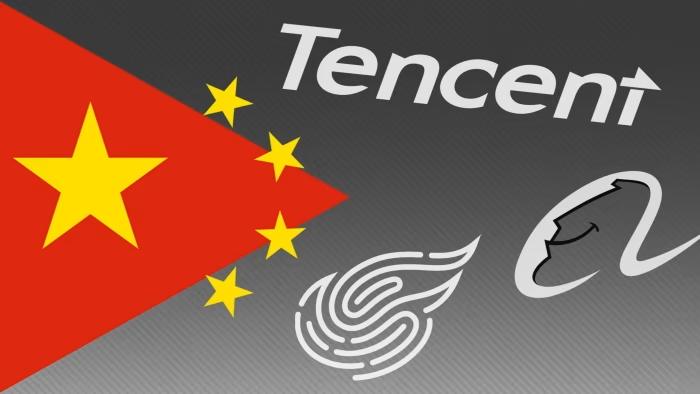Introduction: Overview of China’s Increasing Regulatory Pressures on Its Tech Sector
Over the past few years, China’s regulatory environment for technology companies has undergone a dramatic transformation. The country, which was once seen as a global hub for tech innovation, has introduced a series of regulatory pressures targeting its homegrown tech giants. These regulations range from antitrust actions to new data privacy laws, signaling a significant shift in the Chinese government’s approach to the tech sector.
China’s crackdown on its tech companies has been a response to concerns over monopolistic behavior, data security, and the growing influence of tech giants on both the domestic and global stage. The Chinese Communist Party (CCP) has long been wary of the potential power that these companies hold, both economically and politically. Consequently, tech behemoths like Alibaba, Tencent, ByteDance, and others have faced new rules that challenge their business models, stifle expansion, and alter the landscape of innovation.
In this article, we explore the impact of China’s increasing regulatory pressures on its tech sector and analyze what these changes mean for global innovation, markets, and the broader technology ecosystem. We will also look at the ripple effects on investment, supply chains, and the future of China’s tech sector. The ultimate question is whether China’s crackdown will lead to long-term setbacks for its tech industry or whether it can recover and continue to thrive as a global tech powerhouse.
Impact on Global Tech Innovation: How Chinese Regulations Are Affecting International Tech Companies and Global Innovation
China has long been one of the most significant players in global tech innovation. The country is home to some of the world’s most influential tech companies, including Alibaba, Tencent, and Huawei, all of which have contributed heavily to global technological advancements in areas like e-commerce, social media, cloud computing, artificial intelligence, and telecommunications.
Stifling Innovation at Home
China’s aggressive regulatory approach has had a direct impact on domestic innovation. The government has imposed strict measures on data privacy, anti-competitive practices, and the influence of big tech companies in the market. For example, the Chinese government passed the Personal Information Protection Law (PIPL) in 2021, which restricts how companies handle personal data. This law has forced many tech giants to adjust their operations, leading to increased compliance costs and limited flexibility in their business strategies.
Additionally, China’s Anti-Monopoly Law and increasing scrutiny of tech mergers and acquisitions have forced companies to reevaluate their expansion strategies. For instance, in 2021, Alibaba was fined a record $2.8 billion for anti-competitive behavior, marking a significant move by the government to curb the dominance of its homegrown giants. These regulatory measures have made it harder for Chinese tech companies to grow at the pace they once did, slowing the overall pace of innovation within the country.
Global Implications for Tech Companies
Beyond China’s borders, these regulatory actions are reverberating across the global tech landscape. Many international companies that rely on access to the Chinese market, such as Apple, Microsoft, and Google, are facing increased uncertainty. Chinese regulations have made it more challenging for foreign firms to operate smoothly within the country, particularly in sectors like data services, cloud computing, and e-commerce.
For example, companies like Apple have had to comply with Chinese data localization laws, which require data to be stored within the country. This has raised concerns about the security and privacy of data, particularly for multinational companies that have a global customer base.
Global Innovation Slowdown?
At the same time, China’s crackdown is slowing down some of the broader global innovation trends, especially in areas like artificial intelligence (AI) and 5G telecommunications. Chinese companies like Huawei have been leaders in 5G technology, and their growing influence in international markets has raised both concerns and opportunities for global companies. However, increasing regulatory restrictions on these companies have made it more difficult for them to expand globally, potentially hindering global technological advancement in critical areas.
In short, while China’s tech sector remains large and influential, its regulatory environment is creating significant challenges not only for domestic companies but for international firms as well. This disruption could have long-term implications for global innovation, as the country that once helped propel many technological advancements is now seeing its pace slow down.
Ripple Effects on Investment: How Global Investors Are Reacting to the Uncertainty in the Chinese Tech Landscape
China’s regulatory crackdown has created a wave of uncertainty for global investors who have been heavily invested in Chinese tech companies. For years, these companies were seen as promising high-growth opportunities, drawing billions in foreign investment. However, the shifting regulatory landscape has led to a reevaluation of the long-term prospects for China’s tech industry, causing many investors to reassess their positions.
A Shift Toward Caution
The immediate reaction among investors has been one of caution. Many have begun to pull back from investments in Chinese tech companies, fearing that the regulatory pressures will continue to intensify. The Hong Kong-listed shares of Tencent, Alibaba, and other Chinese tech companies have seen significant declines since 2021, as the government’s tightening grip has created fears about future profitability and growth.
This shift away from Chinese tech stocks has been particularly evident in Western investment markets. Major institutional investors like BlackRock and Fidelity have reduced their exposure to Chinese companies, and some have divested completely from the sector. Additionally, there has been a rise in calls for greater transparency and oversight of Chinese companies, particularly those listed on Western stock exchanges. Investors are now more hesitant to engage with companies that may face unpredictable regulatory risks.
Reallocating Capital: A Shift to Other Emerging Markets
In response to this uncertainty, many global investors have turned their attention to other emerging markets in search of growth opportunities. Countries like India, Vietnam, and Brazil have become more attractive as alternatives to China’s tech sector, especially as these markets are not facing the same level of regulatory scrutiny. For instance, India’s tech sector, driven by companies like Infosys and Wipro, is growing rapidly, and the government’s policies are less restrictive compared to China’s.
At the same time, some investors are looking at the potential of Africa’s tech markets, which are seeing significant growth in areas like mobile payments, e-commerce, and mobile technology. The uncertainty surrounding China has caused capital to flow into these regions, as companies and investors seek to diversify their portfolios in the face of an increasingly unpredictable Chinese market.
Increased Focus on Tech Regulation and ESG Concerns
Another notable shift has been the growing emphasis on Environmental, Social, and Governance (ESG) concerns, as investors look for companies that align with socially responsible practices. As China’s crackdown on its tech sector has been partly driven by concerns over monopolistic practices, privacy violations, and cybersecurity issues, global investors are increasingly looking for companies that demonstrate a commitment to responsible governance and data privacy.
This move toward ESG-focused investing may also have a long-term impact on China’s ability to attract global capital. Investors may look more favorably on companies that prioritize transparency, sustainability, and ethical business practices, particularly as they navigate an increasingly regulated environment.

Impact on Tech Supply Chains: How the Chinese Crackdown on Tech Giants Affects Global Supply Chains and Tech Hardware Production
China is the world’s largest manufacturer and exporter of technology products, from smartphones and computers to semiconductors and telecommunications equipment. The country’s dominance in global tech supply chains means that any disruptions in its tech sector have ripple effects across the globe.
Disruption in Hardware Production
China’s increasing regulation of its tech giants has led to disruptions in the production of critical tech hardware. For example, Huawei, once a global leader in smartphone production and 5G infrastructure, has been severely impacted by U.S. sanctions and Chinese government policies. These disruptions have caused delays in the production of critical components, particularly semiconductors, which are a key part of many consumer electronics and high-tech devices.
As global demand for semiconductors has surged, the disruption of Chinese manufacturing capabilities has placed additional strain on supply chains. Companies that rely on Chinese factories to produce components for smartphones, laptops, and other electronic devices are feeling the impact. For instance, Apple has had to diversify its supply chain by moving some of its manufacturing out of China to countries like India and Vietnam to mitigate the risks associated with the Chinese tech crackdown.
Shift in Global Supply Chain Dynamics
In response to these challenges, many companies are reevaluating their global supply chains and seeking to reduce their dependence on Chinese manufacturers. The ongoing U.S.-China trade war and the fallout from the pandemic have accelerated this trend, as businesses try to build more resilient supply chains that are less vulnerable to geopolitical instability.
In the short term, this shift away from China could lead to higher production costs for tech hardware manufacturers, as they look for alternative sources of labor and materials. In the long term, however, the move toward diversification could create new opportunities in other regions, particularly in Southeast Asia and South Asia, which are quickly becoming global hubs for tech manufacturing.
Outlook: Can China’s Tech Sector Bounce Back, or Will These Regulations Permanently Alter the Global Market?
The future of China’s tech sector remains uncertain. While the government’s crackdown on its tech giants has clearly had a significant impact on the industry, there are several factors that could determine whether China’s tech sector can recover or whether these regulations will permanently alter the global market.
Potential for Recovery
Despite the challenges, there are signs that China’s tech sector could bounce back. The Chinese government has indicated that it is open to fostering a more open and competitive tech environment, though this will likely be balanced with continued regulatory oversight. Moreover, China’s vast consumer
market and its continued leadership in areas like AI, 5G, and e-commerce provide a solid foundation for the sector’s long-term growth.
Ongoing Uncertainty
However, the level of uncertainty remains high. As long as the regulatory environment in China remains unpredictable, companies may continue to face challenges in scaling and innovating at the pace they once did. Furthermore, the growing geopolitical tensions between the U.S. and China could exacerbate these risks, making it difficult for companies to operate smoothly in both domestic and international markets.
A New Global Tech Landscape?
In the longer term, China’s tech crackdown could lead to a restructuring of the global tech landscape. As investors and companies diversify away from China, new centers of innovation and manufacturing could emerge in other parts of the world. In addition, countries with more predictable regulatory environments may become more attractive destinations for tech investment.





























